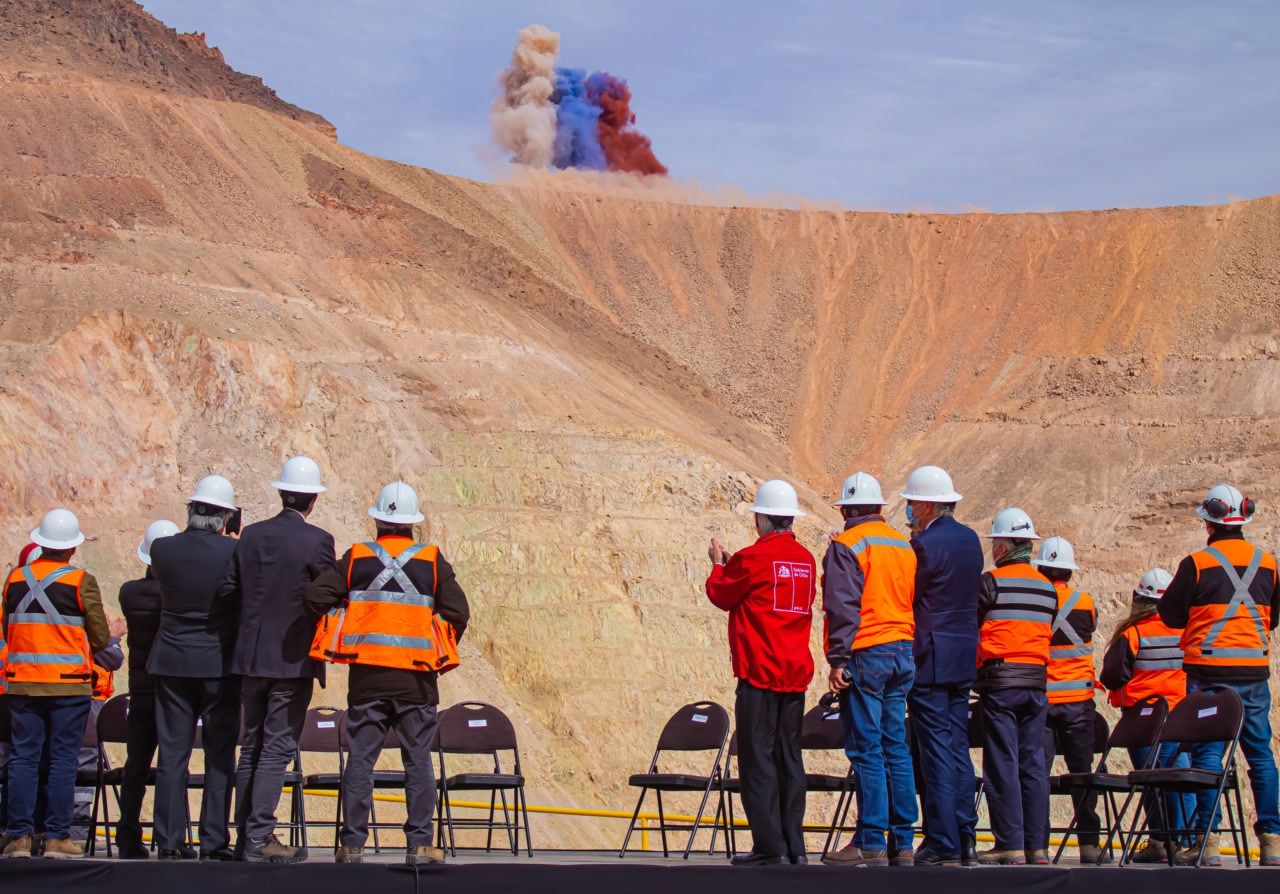
Codelco, Chile's National Copper Corporation, is the world's leading copper producer and one of Chile's largest companies. The Codelco Salvador Division is located in the district of Diego de Almagro, in the Atacama Region. Its operations, which date back to 1959, are located in the Andes mountain range at 2,600 meters high, 1100 kilometers north of Santiago. This Division has been in operation since 1959 and has two types of deposits, the underground "Inca" mine and the open pit "Campamento Antiguo" and "Damiana Norte" mines. Salvador exploits oxidized and sulfurized minerals.
The main product of this Division is the electro-refined cathodes, electrowinning, and copper concentrate. Molybdenum, anode sludge, and sulfuric acid are also some of the main elements obtained. During 2015, Salvador Division brought 48,582 tons of refined copper. Some of the company's key suppliers are H-E Parts (equipment overhaul), Movitec S.A (earthmoving services, exploitation of deposits and leasing of heavy machinery), Grupo Misecop SPA, MP Conveyor, JRI Ingeniería SA, DICAT UCSC, Universidad Católica de la Santísima Concepción (geophysical measurements), FUCHS LUBRITECH Group, Enaex Chile (explosives).
A breath of fresh air
The Rajo Inca Project is the Division's main product. Mineral reserves at the mine were projected to be extinguished entirely this year, but the Rajo Inca Project project gives Codelco access to another 796 million tonnes of mineral. It's a lifesaving move that extends the operational continuity of the company until 2070. The latter is due to a radical change in the exploitation method, mainly carried out by underground mining. With the new approach, the Division will optimize processing infrastructure and extract copper ores in an open pit.
A leap in production indicators
The company anticipates commercial production to begin in the second half of 2022 and aims to achieve a total production capacity (90,000 tonnes per year) in the first half of 2023. This means 50% more production of the remaining resources of the Indio Muerto deposit. The project has had an investment of US$1,383 million and will create 2,400 jobs in the busiest construction period. A 9% increase in employability is anticipated in the Atacama Region during its construction. Furthermore, a 3% increase in regional GDP during its operations is expected.
During the first semester of 2021, Codelco produced 796 thousand tons of refined copper, which meant an increase of 7% compared to the same period of 2020. In that period, the company left a surplus of US $ 3,675 million, ten times above the same indicator for the same period in the year before. In El Salvador (Chile), where Rajo Inca is located, there is evidence of mining activities since pre-Columbian times, when the area's first inhabitants extracted copper from the hills.
Sustainability objectives
Juan Benavides, President of the Board of Directors of Codelco, stated that "this project will advance in recovering Codelco's historical position as a hub for innovation and technology in Atacama. With discipline, we will fulfill and enforce the commitments acquired". Some of the commitments Mr. Benavides mentions have to do with hiring local labor for the construction and operation phases. There will also be a gender equality approach in project operations, support for local entrepreneurs, and technical-professional internships for secondary students from neighboring communities.
"We are building Codelco's transformation on solid grounds that are accountable for the environment and nearby communities because we are aware of the climatic crisis that we are going through. We are taking charge of our purpose as a company that strengthens the sustainable development of Chile and the world, with specific goals and defined deadlines, "said Mr. Benavides. That's why the company has committed to being carbon neutral by 2050 in an open letter signed by the presidents of companies that comprise the International Council of Mining and Metals (ICMM). The pledge is compliant with the purposes of the Paris Agreement and the facts exposed by the report issued last August by the Intergovernmental Group of Experts on Climate Change (IPCC). The Rajo Inca project will contribute to the fight against climate change with the minerals extracted.
Some of the other commitments Mr. Benavides mentions have to do with:
1. Lowering carbon footprint: The company seeks to reduce greenhouse gas emissions by 70%. They will do so by enabling a 100% clean energy matrix. The goal is to innovate by replacing all production and logistics equipment in underground mines with electrical equipment. The company has also pledged to actively participate in searching for new clean energy sources such as green hydrogen. Additionally, Codelco has announced the target of zero net greenhouse gas (GHG) emissions by 2050 or earlier.
2. Lowering water footprint: Codelco seeks to reduce the unit consumption of continental waters by 60%. For this, they aim to decrease the use of fresh resources in operations. The company will also incorporate a desalination plant for the Northern District and reuse water from their dams.
3. Circular economy: Codelco will recycle 65% of industrial waste and 100% mining tires. The company will also increase the recycling of the main non-hazardous solid industrial waste from operations and projects, for example, steel, wood, packaging materials, organic waste, and scrap metal.
4. New standard in tailings deposits: Deposits with world-class security and sustainability measures. Codelco will monitor the physical and chemical stability of tailings deposits online with innovative systems and apply infiltration control systems.
5. Development of the territory with social value: The company has vowed to increase the goods and services provided by local suppliers by 60%. Additionally, Codelco will implement a new integration strategy with the territory focusing on generating social value. They will promote the local workforce, strengthen mining education and increase territorial sustainability.
Rajo Inca is a project that's efficient from a productive point of view, and also clean and sustainable from an environmental point of view. The overall objective behind all these actions is to create procedures that significantly mitigate negative impact, a critical trial for the mining industry as a whole.













